How to Grow Horseradish: A Complete Guide to Growing and Caring for Your Plant
- March 20, 2024
- 1 comment
Learn How to Grow Horseradish, known scientifically as Armoracia rusticana, is a hardy perennial plant prized for its pungent root that is often grated and used as a spicy condiment. Growing horseradish in your garden can be both rewarding and practical, as the plant requires minimal care and the root can be harvested as needed. In this article, we’ll guide you through the steps to grow, care for, and harvest horseradish successfully.
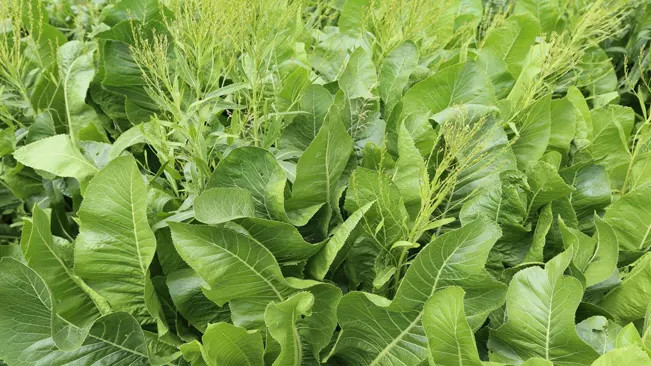
Benefits of Horseradish
| Benefit | Description |
|---|---|
| Rich in Nutrients | Horseradish is low in calories but rich in fiber, vitamin C, folate, potassium, calcium, magnesium, and zinc. |
| Antimicrobial Properties | The compounds in horseradish have been shown to have antimicrobial effects, which can help fight infections. |
| Supports Digestive Health | The fiber in horseradish can aid digestion by promoting regularity and preventing constipation. |
| May Boost Immunity | The high vitamin C content helps support the immune system, potentially reducing the risk of common illnesses. |
| Anti-inflammatory Effects | Certain compounds in horseradish may have anti-inflammatory properties, which can help reduce pain and swelling. |
| May Support Weight Loss | Being low in calories and high in fiber, horseradish can be a beneficial addition to a weight loss diet. |
| Potentially Detoxifying | Horseradish contains compounds that may help detoxify the body and protect the liver from damage. |
| Antioxidant Properties | It contains antioxidants that combat free radicals, reducing oxidative stress and potentially lowering cancer risk. |
List on How To Grow Horseradish
- Choosing a Planting Site
- Planting Horseradish
- Caring for Horseradish Plants
- Harvesting Horseradish
- Storing Horseradish
Choosing a Planting Site
Horseradish thrives in full sun but can tolerate partial shade. Select a spot in your garden where the plant will receive at least six hours of sunlight daily. Ensure the site has well-drained soil, as horseradish does not do well in waterlogged conditions. The plant prefers a slightly acidic to neutral soil pH, ranging from 6.0 to 7.5.

Sunlight Requirements
- Full Sun: Horseradish grows best in full sun conditions, which means the site should receive at least six hours of direct sunlight each day. Full sun exposure is key to encouraging strong root growth and the development of that characteristic pungent flavor horseradish is known for.
- Partial Shade Tolerance: Although horseradish prefers full sun, it can tolerate partial shade. In less sunny conditions, the plant might still grow, but the roots may not be as large or flavorful as those grown in full sun.
Soil Conditions
- Well-Drained Soil: The importance of well-drained soil cannot be overstated. Horseradish roots are susceptible to rot in soggy, waterlogged conditions. The planting site should allow excess water to drain away efficiently, preventing standing water around the roots.
- Soil Type: Loamy soil, which is a mix of sand, silt, and clay, is ideal for horseradish. This type of soil tends to have good drainage and fertility, providing an excellent environment for root crops.
- Soil pH: Horseradish prefers a slightly acidic to neutral pH, ranging from 6.0 to 7.5. If the soil in your chosen site is outside this range, it can be amended to suit. For soil that is too acidic, you can add garden lime to increase the pH. If the soil is too alkaline, incorporating sulfur can help lower the pH to a more suitable level.
Site Preparation
- Clearing the Site: Before planting, clear the area of weeds, debris, and other plants. Horseradish doesn’t compete well with other vegetation, especially during its initial growth stages.
- Soil Amendment: If your soil isn’t ideal, it’s worth amending it before planting. Adding organic matter, such as compost or well-rotted manure, can improve soil structure, drainage, and nutrient content.
- Loosening the Soil: Horseradish roots can grow quite deep. Loosening the soil to a depth of 12-18 inches (30-45 cm) helps facilitate this growth, allowing roots to penetrate the soil easily and develop fully.
Planting Horseradish
Horseradish is typically propagated from root cuttings, often referred to as “sets.” These can be obtained from a garden center or sourced from a fellow gardener.

Choosing Horseradish Sets
- When selecting horseradish sets for planting, look for healthy, disease-free roots. These should be firm to the touch and free of any soft spots, mold, or other signs of decay. The sets are usually about the size of a pencil in diameter and can vary in length, but typically, 4-6 inch (10-15 cm) pieces are used for planting.
Soil Preparation
- Horseradish prefers well-drained soil, as standing water can lead to root rot. If your soil is heavy clay, consider amending it with organic matter such as compost, peat moss, or aged manure to improve drainage. This not only enriches the soil but also helps to keep it loose, which encourages robust root development.
- Conducting a soil test can be beneficial to determine the soil pH and nutrient levels. Horseradish grows best in a slightly acidic to neutral soil pH (6.0 to 7.5). If your soil is too acidic or alkaline, you can adjust it by adding lime (to increase pH) or sulfur (to decrease pH) according to the soil test recommendations.
Planting the Sets
- The reason for planting the sets at a 45-degree angle is to encourage the roots to grow straight down, which facilitates easier harvesting. The top of the cutting should be positioned about 2 inches below the soil surface to ensure that the plant has enough coverage to establish itself while also being shallow enough to sprout effectively.
- Spacing the plants sufficiently apart allows each horseradish plant enough room to develop without competing for nutrients, water, or sunlight. This spacing also makes it easier to harvest the roots without disturbing neighboring plants.
- After planting the sets, water the soil well to settle it around the roots and remove any air pockets. This initial watering is crucial for helping the sets to establish.
Caring for Horseradish Plants
Horseradish plants are relatively low-maintenance, but a few simple care steps can ensure healthy growth and a good yield:
Watering
Horseradish plants prefer consistently moist soil, but it’s crucial to avoid overwatering. Excessive moisture can lead to root rot, a common issue with root vegetables. To maintain the right moisture level:
- Check the soil moisture by inserting your finger about an inch into the soil. If it feels dry at that depth, it’s time to water.
- Use drip irrigation or soaker hoses to apply water directly to the soil, minimizing wetting the foliage, which can lead to disease.
- Water in the morning to allow any moisture on the leaves to dry during the day, reducing the risk of fungal diseases.
Weeding
Weeds can compete with horseradish plants for nutrients, water, and sunlight, inhibiting their growth. To effectively manage weeds:
- Regularly hand-pull or hoe weeds when they are small to prevent them from establishing and becoming more difficult to remove.
- Be careful not to disturb the horseradish roots while weeding, as this can damage the plant.
Mulching
Mulch serves multiple purposes in the horseradish garden, including moisture retention, temperature regulation, and weed suppression. When applying mulch:
- Use organic materials like straw, wood chips, or compost. These materials also add nutrients to the soil as they decompose.
- Apply a 2-3 inch layer of mulch around the base of the plants, being careful not to pile it up against the stems to avoid moisture buildup and potential stem rot.
Fertilizing
Horseradish plants benefit from a balanced, nutrient-rich environment to support their growth. When fertilizing:
- Choose a balanced, slow-release fertilizer with an N-P-K ratio close to 10-10-10.
- Apply fertilizer according to the package instructions, usually at planting time and again in mid-summer. Avoid over-fertilizing, as too much nitrogen can promote leaf growth at the expense of root development.
- Consider incorporating well-rotted manure or compost into the soil before planting as a natural fertilizer option.
Harvesting Horseradish
Timing
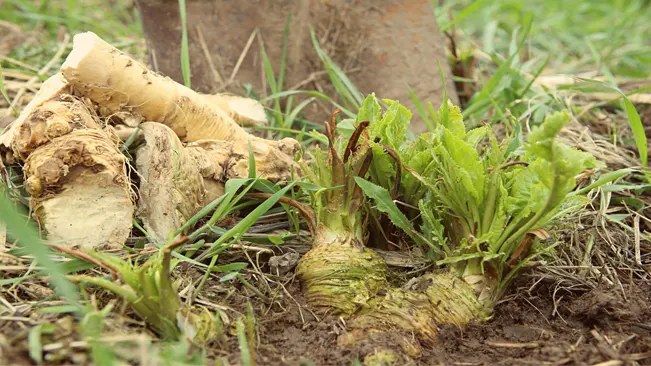
- Why Fall?: Harvesting in the fall after the first frost is ideal because the cold temperatures convert some of the starches in the horseradish root into sugars, which can enhance the root’s flavor. This is a common phenomenon in many root crops, where a touch of frost is said to sweeten the roots.
- Alternative Timing: While fall is ideal, you can technically harvest horseradish at any time of the year once the roots are of a usable size. If you need horseradish at other times, you can dig up a portion of the root, leaving the rest to continue growing.
Harvesting Steps
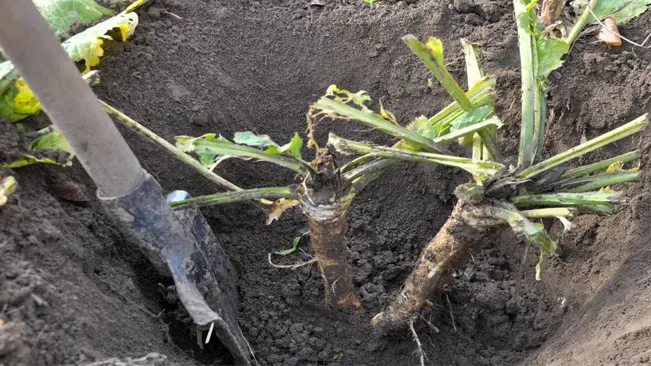
- Preparation: Before you start digging, prepare your tools. Ensure your digging fork or spade is sharp and clean to avoid damaging the roots.
- Loosening the Soil: Start by loosening the soil around the plant. Be generous with the area you loosen; horseradish roots can grow quite deep and spread outwards. The goal is to avoid breaking the main root, as this can affect the quality of your harvest.
- Lifting the Plant: Once the soil is loose, gently lift the plant from the ground. It might be helpful to use your hands to feel around the root to gauge its size and direction, minimizing the risk of snapping it.
- Cleaning: After lifting the plant, shake off any loose soil and use a soft brush to remove excess dirt. Avoid washing the roots with water if you plan to store them, as moisture can encourage rot.
Post-Harvest
- Trimming: Trim off the top foliage and any small, hair-like feeder roots. You’ll want to keep the main root, which is the part most commonly used in cooking and condiments.
- Storing: If you’re not using the horseradish immediately, it can be stored in a cool, dark place. Some people wrap the roots in damp paper towels and place them in a plastic bag in the refrigerator’s crisper drawer, where they can last for a few weeks to a couple of months.
- Regrowth: If you’re interested in growing horseradish again, you can replant a piece of the root. Choose a healthy-looking piece, about the size of a pencil in diameter and at least 8 inches long, and replant it at a 45-degree angle.
Storing Horseradish
Freshly harvested horseradish roots can be stored in the refrigerator for a few weeks or preserved for longer storage. To preserve horseradish, it can be grated and mixed with vinegar, then stored in a sealed container in the refrigerator, where it will keep for several months.
Fresh Storage
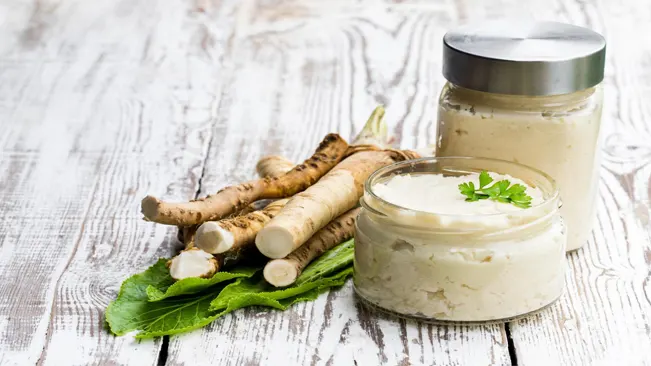
- Cleaning: After harvesting, clean the horseradish roots thoroughly under running water. Use a brush to remove any soil clinging to the roots. Pat them dry with a clean towel.
- Preparation: Trim off any remaining leaves and small roots, as you’ll only want to store the main root. There’s no need to peel the roots before storage if they’re fresh.
- Refrigeration: Wrap the cleaned and trimmed roots in damp paper towels. Place these wrapped roots in a plastic bag, but do not seal it entirely to allow for some air circulation. Store the bag in the crisper drawer of your refrigerator.
Long-Term Preservation
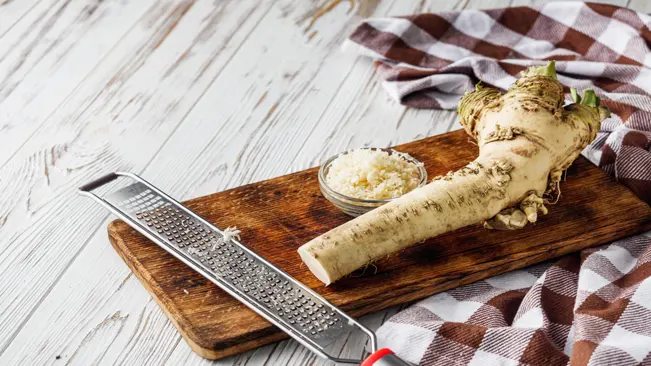
- Grating: When ready to preserve, peel the horseradish root and grate it using a food processor or hand grater. Be prepared for a potent experience – the freshly grated horseradish can be quite strong, and it might be advisable to do this in a well-ventilated area or even outdoors.
- Mixing with Vinegar: Immediately mix the grated horseradish with vinegar. The vinegar stops the enzymatic process that produces the heat of the horseradish. The timing of adding vinegar is crucial: doing it within 3 minutes of grating yields milder horseradish, while waiting longer can increase the heat.
- Seasoning: You can add a pinch of salt for seasoning. Some people also like to add a small amount of sugar to balance the acidity and heat, but this is optional.
- Storage Containers: Transfer the vinegar-mixed horseradish into clean, airtight glass jars. Leaving a small space at the top of the jar before sealing it helps to ensure a better preservation.
- Refrigeration: Store the sealed jars in the refrigerator. Properly prepared and stored horseradish can last for 4 to 6 months when kept chilled.
Related Post:
- How to Grow Ground Cherry: Simple Steps for Lush Growth
- How to Grow Spaghetti Squash: Your Thriving Garden Guide 2024
- How to Grow Runner Beans: A Comprehensive Guide for Bountiful Harvests
- How to Grow Jicama: Your Easy Guide to Cultivating the Mexican Yam Bean
- How to Grow Cinnamon Basil: A Beginner’s Guide to Aromatic Gardening
- How to Grow Roma Tomatoes: Expert Tips for a Lush Homegrown Harvest
- How to Grow Blackberries: Easy Steps to Grow and Nurture Your Own
Conclusion
Growing horseradish is a simple and satisfying endeavor that rewards gardeners with a fresh, spicy flavor for their culinary creations. By following these steps, you can successfully grow, care for, and harvest horseradish in your garden, ensuring a robust supply of this flavorful root.
FAQs (Frequently Asked Questions)
- What is the best time of year to plant horseradish?
- Horseradish is best planted in early spring, once the risk of frost has passed, or in the fall, at least 4-6 weeks before the first expected frost.
- Horseradish is best planted in early spring, once the risk of frost has passed, or in the fall, at least 4-6 weeks before the first expected frost.
- How deep should I plant horseradish sets?
- Plant horseradish sets at a depth of about 2 inches (5 cm), positioning them at a 45-degree angle in the soil.
- Plant horseradish sets at a depth of about 2 inches (5 cm), positioning them at a 45-degree angle in the soil.
- How much space do horseradish plants need?
- Space horseradish plants about 18-24 inches (45-60 cm) apart in rows that are 30 inches (76 cm) apart to allow enough room for growth.
- Space horseradish plants about 18-24 inches (45-60 cm) apart in rows that are 30 inches (76 cm) apart to allow enough room for growth.
- Can I grow horseradish in partial shade?
- While horseradish prefers full sun, it can tolerate partial shade. However, the root size and flavor might not be as robust as those grown in full sun.
- While horseradish prefers full sun, it can tolerate partial shade. However, the root size and flavor might not be as robust as those grown in full sun.
- How often should I water my horseradish plants?
- Water horseradish plants regularly to keep the soil moist but not waterlogged. The exact frequency depends on your climate, but a good rule of thumb is 1 inch of water per week, either from rainfall or irrigation.
- Water horseradish plants regularly to keep the soil moist but not waterlogged. The exact frequency depends on your climate, but a good rule of thumb is 1 inch of water per week, either from rainfall or irrigation.
- Do I need to fertilize my horseradish plants?
- Fertilize horseradish in early spring with a balanced, slow-release fertilizer and again in mid-summer to support growth. Avoid high-nitrogen fertilizers, which can promote leaf growth at the expense of root development.
- Fertilize horseradish in early spring with a balanced, slow-release fertilizer and again in mid-summer to support growth. Avoid high-nitrogen fertilizers, which can promote leaf growth at the expense of root development.
- When is the right time to harvest horseradish?
- The best time to harvest horseradish is in the fall, after the first frost, as the cold weather tends to enhance the root’s flavor.
- The best time to harvest horseradish is in the fall, after the first frost, as the cold weather tends to enhance the root’s flavor.
- How do I harvest horseradish?
- Use a digging fork to loosen the soil around the plant. Carefully lift the plant, brush off excess soil, and trim off the leaves and small feeder roots, leaving the main root.
- Use a digging fork to loosen the soil around the plant. Carefully lift the plant, brush off excess soil, and trim off the leaves and small feeder roots, leaving the main root.
- Can I leave horseradish in the ground over winter?
- Yes, horseradish is a hardy perennial that can be left in the ground over winter. You can harvest as needed, or dig up the plant in early spring before new growth starts.
- Yes, horseradish is a hardy perennial that can be left in the ground over winter. You can harvest as needed, or dig up the plant in early spring before new growth starts.
- How do I prevent my horseradish from spreading too much?
- To control its spread, plant horseradish in containers or in a dedicated area of the garden. Regularly remove any volunteer plants or side shoots to keep the plant contained.

Kristine Moore
Forestry AuthorI'm Kristine Moore, a seasoned garden landscaping professional with over 30 years of experience. My extensive career has been dedicated to transforming outdoor spaces into stunning, sustainable landscapes. With a deep understanding of horticulture, design principles, and environmental stewardship, I have become a respected figure in the field, known for creating harmonious, visually appealing, and eco-friendly gardens. My commitment to excellence and continuous learning in landscaping trends and techniques has solidified my reputation as an expert in garden design and implementation.




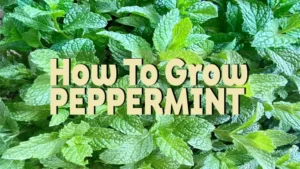

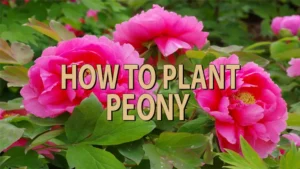


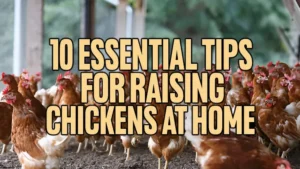
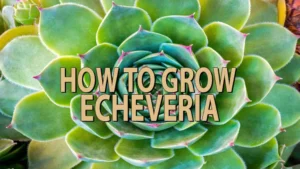
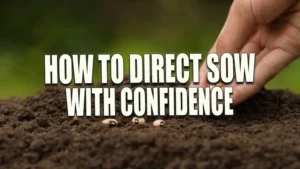

Hi, did I miss it or is it missing within these 8 pages of how to grow horseradish, how to actually know when its ready to harvest and how long is growing time? Two pretty important things to know. Thanks
renee
July 9, 2024 7:28 pm